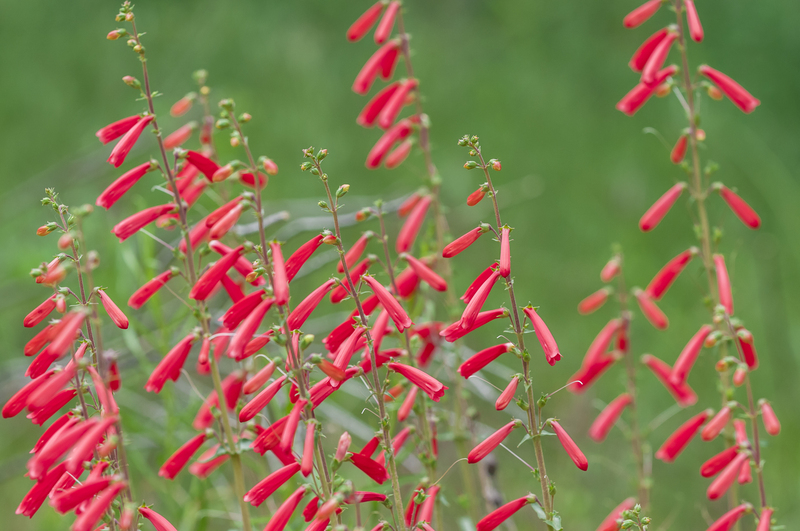Nurturing Orchids with Love and Care
Posted on 21/08/2025
Nurturing Orchids with Love and Care: A Comprehensive Guide
Orchids are among the most captivating and exotic flowers in the world. With their unique blooms, diverse varieties, and alluring fragrances, orchids have earned a beloved place in the hearts and homes of plant enthusiasts. Nurturing orchids with love and care is both an art and a science that rewards dedication with breathtaking beauty. In this comprehensive guide, you'll learn everything you need to know about caring for orchids in your home, from the essential basics to advanced tips for thriving plants.

Understanding Orchids: An Introduction
The orchid family (Orchidaceae) is one of the largest plant families in the world, with more than 25,000 species and countless hybrids. Each type of orchid comes with its own unique requirements, but certain fundamental principles underpin loving orchid care. Whether you're a novice or experienced gardener, understanding their needs will set you on the path to success.
- Epiphytic orchids: These grow on trees and absorb moisture and nutrients from the air.
- Terrestrial orchids: These grow in soil, often in forest floors or grasslands.
- Sympodial and monopodial growth: Orchids grow in two main forms--sympodial (sideways with pseudobulbs) and monopodial (upright, from a single stem).
Popular Orchid Species for Home Growers
- Phalaenopsis (Moth Orchid): Known for their long-lasting and abundant flowers, ideal for beginners.
- Cattleya: Famous for their vibrant colors and fragrance.
- Dendrobium: Requires slightly cooler temperatures and less water.
- Oncidium: Noted for their delicate, dancing-lady-like flowers.
The Essentials of Orchid Care: Nurture with Purpose
Nurturing orchids with love and care means providing the right environment, light, water, humidity, nutrition, and support. Follow these fundamental tips for successful orchid nurturing.
1. Choosing the Right Pot and Soil
Orchids require excellent drainage and airflow to their roots. Instead of standard potting soil, use a special orchid potting mix typically composed of bark, charcoal, and perlite. Always choose pots with adequate drainage holes, and repot every 1-2 years to avoid root rot and ensure healthy growth. A transparent or mesh orchid pot can help monitor root health and prevent overwatering.
2. Providing Optimal Lighting
Light is essential for robust orchid growth. Most home orchids thrive in bright, indirect light. Phalaenopsis varieties, for example, do well on east or west-facing windowsills with filtered sunlight. Too much direct sun can scorch leaves, while too little results in poor blooming.
- Leaf color as a guide: Healthy orchid leaves are bright green. Dark green leaves suggest insufficient light, while yellow or red-tinged leaves could indicate too much.
- Consider using sheer curtains or placing orchids near a window with diffused light.
3. Caring for Roots: Watering with Love
Perhaps the most common mistake in orchid nurturing is improper watering. Orchids prefer to dry out between watering, and emerging roots need oxygen as much as moisture.
- Water sparingly: Only water when the top 1-2 inches of the potting medium feel dry.
- Ensure water drains quickly to avoid root rot.
- Use tepid, distilled, or rainwater when possible to prevent mineral buildup.
- Consider the "soak and dry" method: Soak the orchid thoroughly, then allow it to drain and dry out.
4. Creating the Perfect Humidity
Caring for orchids also means meeting their humidity needs. Most orchids prefer humidity between 40% and 70%.
- Place a humidity tray or pebble tray under your orchids to boost moisture in the air.
- Mist leaves lightly in the morning, but avoid misting late in the day or in cooler temperatures.
- Use a small humidifier during dry winter months.
5. Fertilizing Orchids Gently
Orchids have modest nutritional needs. Use a balanced, water-soluble fertilizer formulated for orchids. A popular rule is "weakly, weekly"--fertilize with diluted solution once a week during the growing season, and reduce frequency during dormancy.
- Flush pots with plain water monthly to prevent fertilizer salt buildup.
- Over-fertilizing can damage roots and hinder blooming.
Diagnosing Common Issues When Caring for Orchids
Nurturing orchids successfully requires recognizing and addressing problems early. Here are some common symptoms to watch for:
- Yellowing leaves: May indicate overwatering, poor drainage, or root rot.
- Wrinkled leaves or shriveled pseudobulbs: Sign of dehydration or insufficient humidity.
- No blooms: Can be caused by too little light, improper fertilization, or temperature fluctuations.
- Spotted leaves: May be fungal or bacterial infection--remove affected leaves and improve airflow.
Inspect your orchids regularly for pests such as mealybugs, scale, or spider mites. Treat infestations with insecticidal soap, neem oil, or by physically removing pests for best results.
Advanced Orchid Nurturing: Love Beyond the Basics
1. Repotting and Root Care
As your orchid grows, it may become root-bound or outgrows its container. Repot every two years, after flowering or if the medium has broken down.
- Gently remove the orchid, shaking off old potting medium.
- Trim dead or mushy roots with clean scissors.
- Place in fresh orchid mix, and water lightly.
2. Mastering the Art of Re-blooming
A key reward of loving orchid care is triggering annual blooms. While some orchids flower easily, others need encouragement:
- Provide a temperature drop: For Phalaenopsis, a 10?F (about 5?C) drop at night can trigger blooming.
- Keep regular feeding during active growth, but reduce in winter.
- Prune spikes correctly for additional flowers (for some species, like Phalaenopsis).
3. Propagating Your Orchid Collection
Expand your love for orchids by learning propagation techniques, such as dividing sympodial orchids or growing keikis (baby plantlets) from monopodial species. Always use sterile tools and ensure healthy parent plants for best results.
Orchid Care Seasonal Checklist
- Spring/Summer: Increase watering and feeding, check for new growth, repot if necessary.
- Fall: Begin reducing water and fertilizer. Look for flower spike emergence and provide cooler nighttime temperatures.
- Winter: Maintain humidity, reduce watering, and ensure adequate light during short days.
Emotional Benefits: Nurturing Orchids with Love
Caring for orchids not only enhances your living space but also offers emotional and mental rewards. Nurturing these exquisite flowers fosters mindfulness, patience, and a sense of accomplishment. Their stunning blossoms are a daily reminder that attention, gentleness, and perseverance yield beauty.
As you tend your orchids, you'll witness nature's resilience and artistry up close. Orchids teach us that love and care create the conditions for extraordinary growth--both for the plant and the person tending it.

Frequently Asked Questions: Orchid Care Insights
- How often should I water my orchid?
Typically, once a week. Ensure the potting medium is dry before watering. Frequency may vary with temperature and humidity. - Why are my orchid's leaves turning yellow?
Usually a sign of overwatering, but could also mean poor drainage or not enough light. - Can I use regular soil for orchids?
No. Orchids require special air-filled potting medium like bark or moss, never regular garden soil. - How do I get my orchid to re-bloom?
Provide bright, indirect light, allow for a temperature drop at night, and avoid overwatering. Patience is essential!
Conclusion: Growing Your Orchid Passion
Nurturing orchids with love and care is more than a gardening pursuit--it's a journey of beauty, patience, and understanding. From the first vibrant bloom to every new leaf, your efforts will be rewarded with more than just flowers; you'll cultivate a sanctuary of serenity and stunning color. Remember, every orchid is unique; pay attention to its signals, respond with thoughtful care, and most importantly, enjoy the process. With the knowledge and dedication gained from this guide, your orchids will flourish, filling your home with joy and botanical splendor for years to come.



